
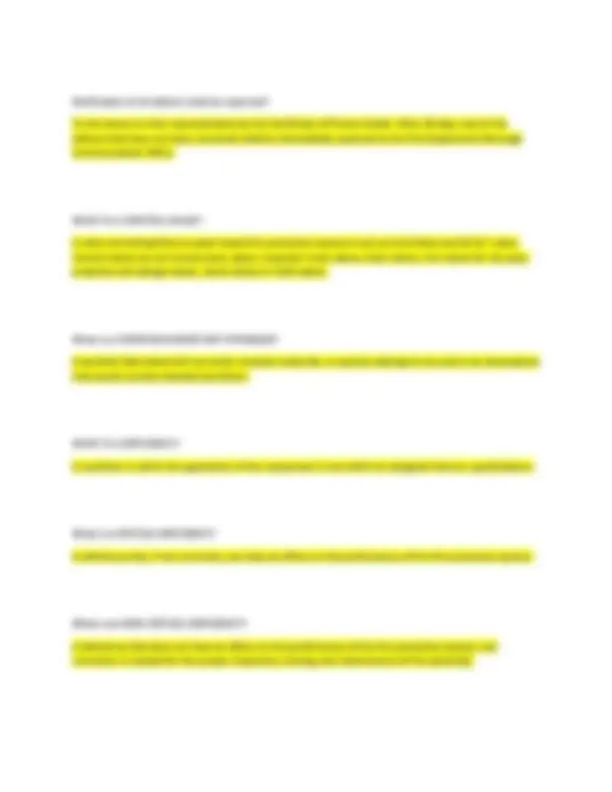
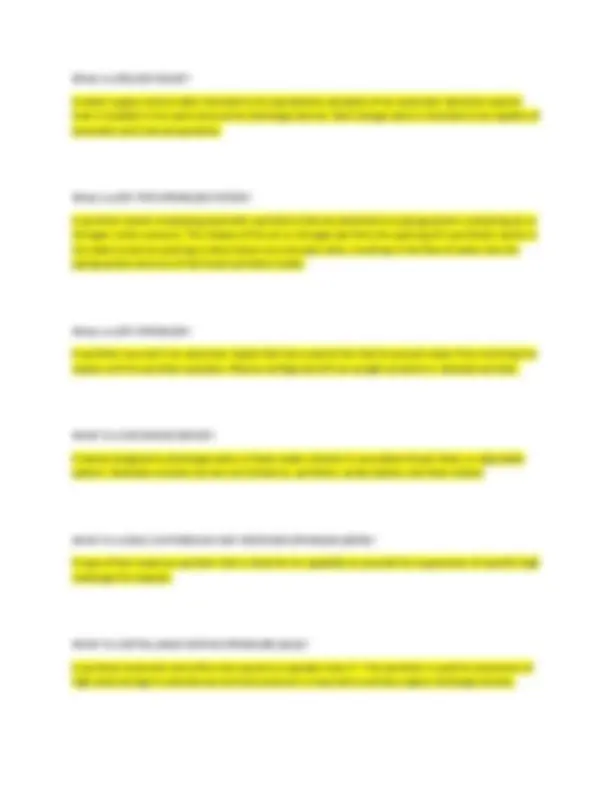
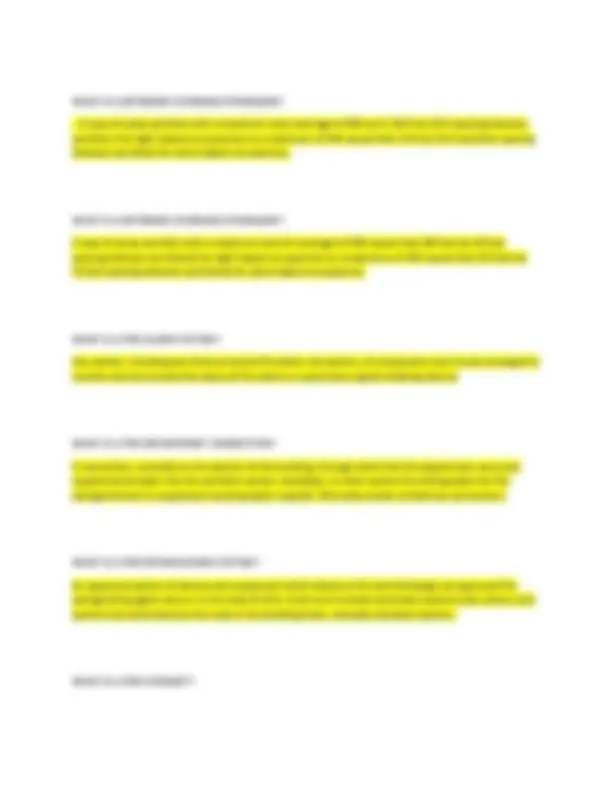
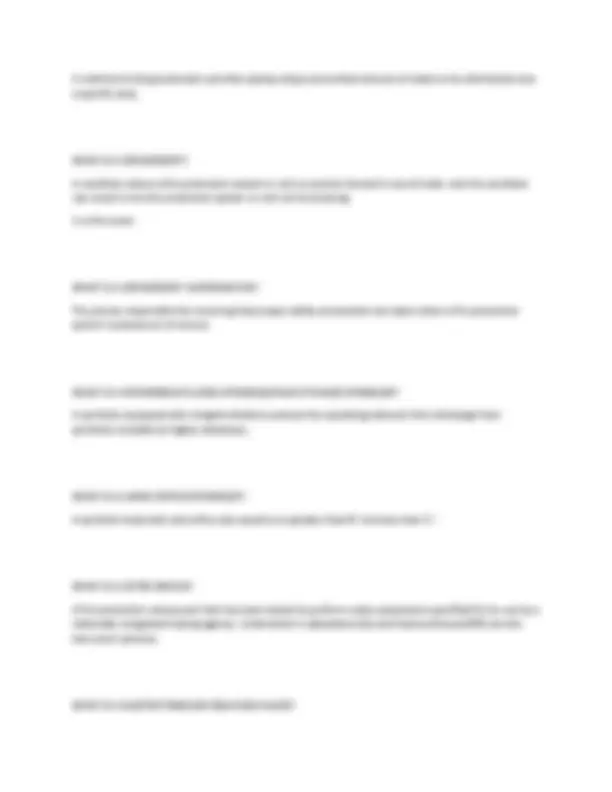
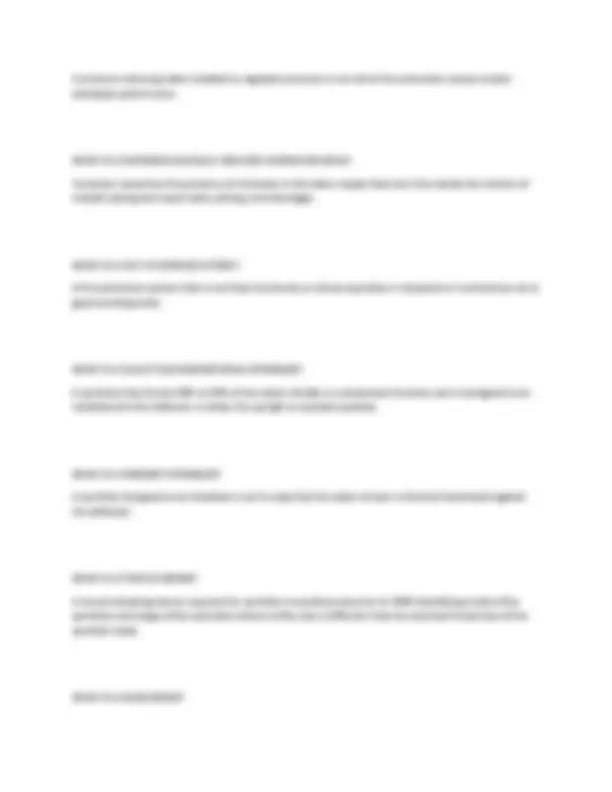
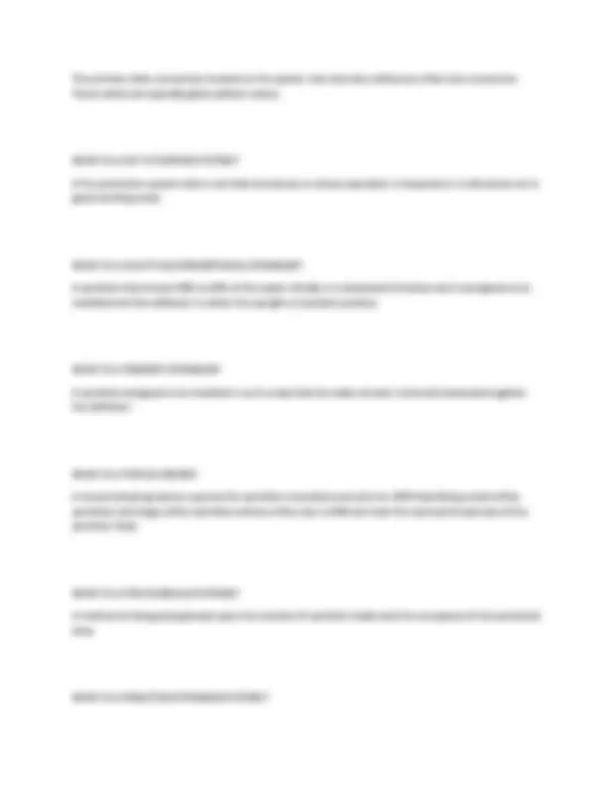
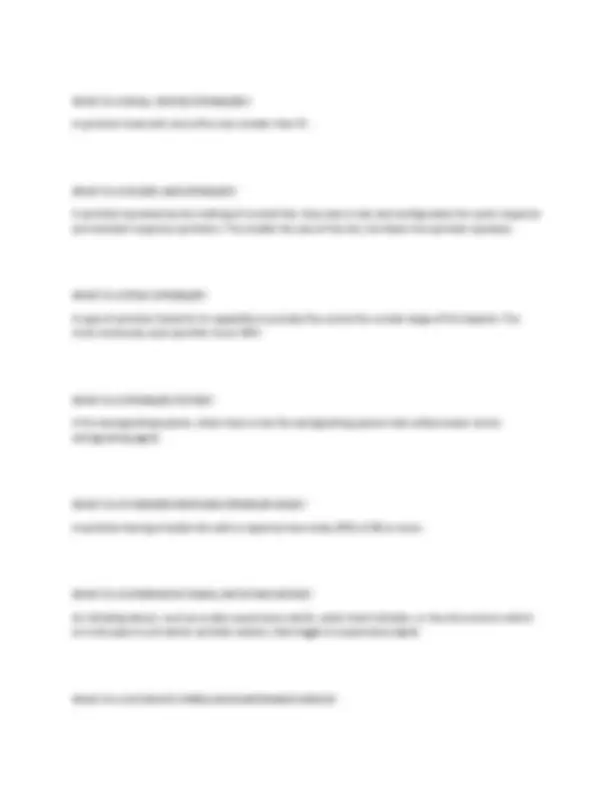
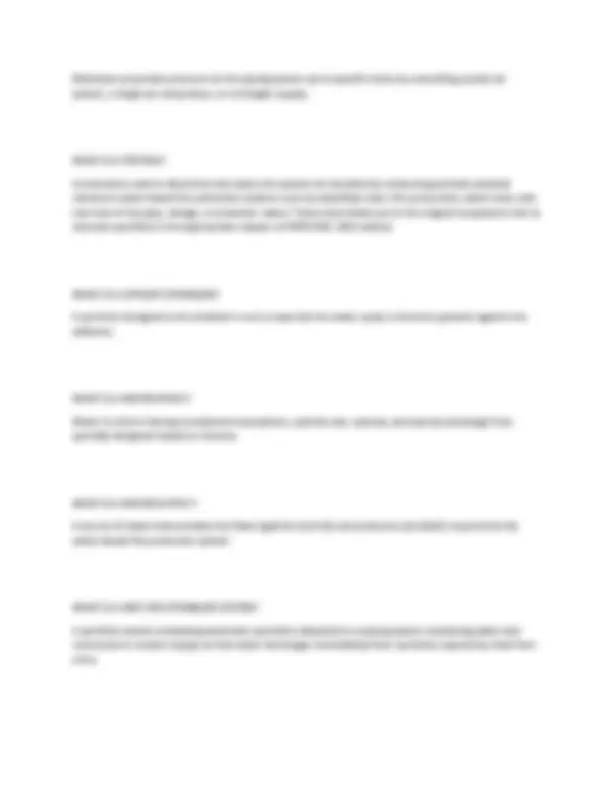
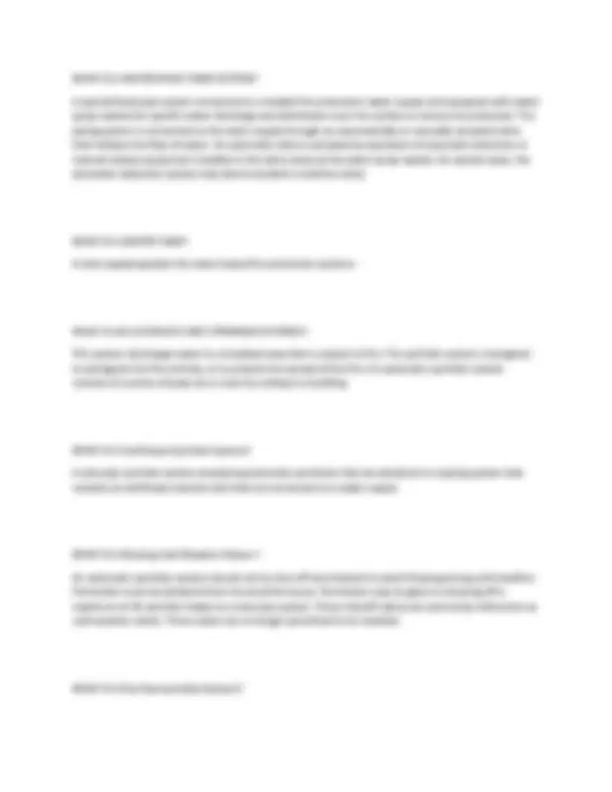
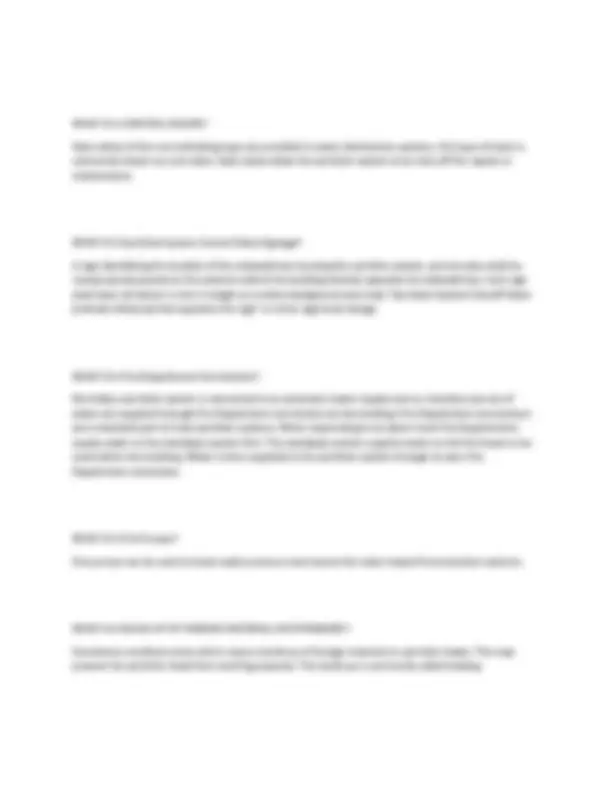
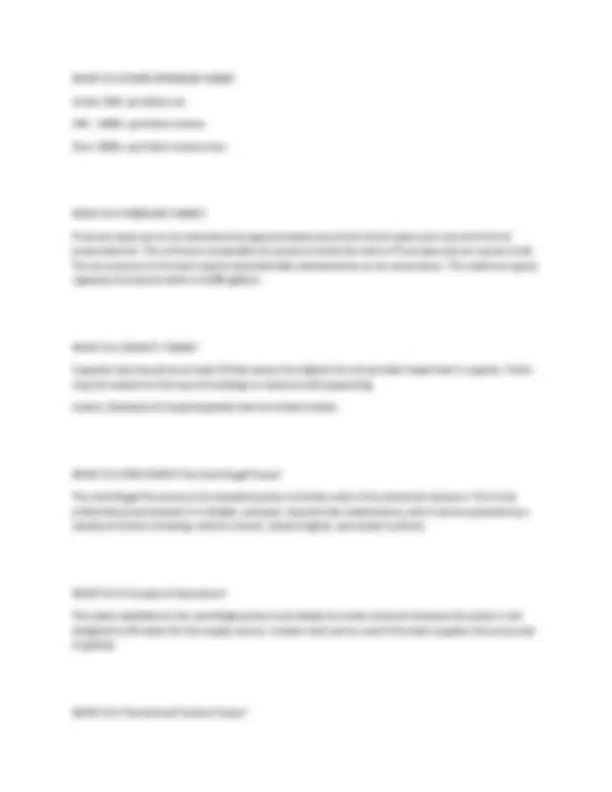
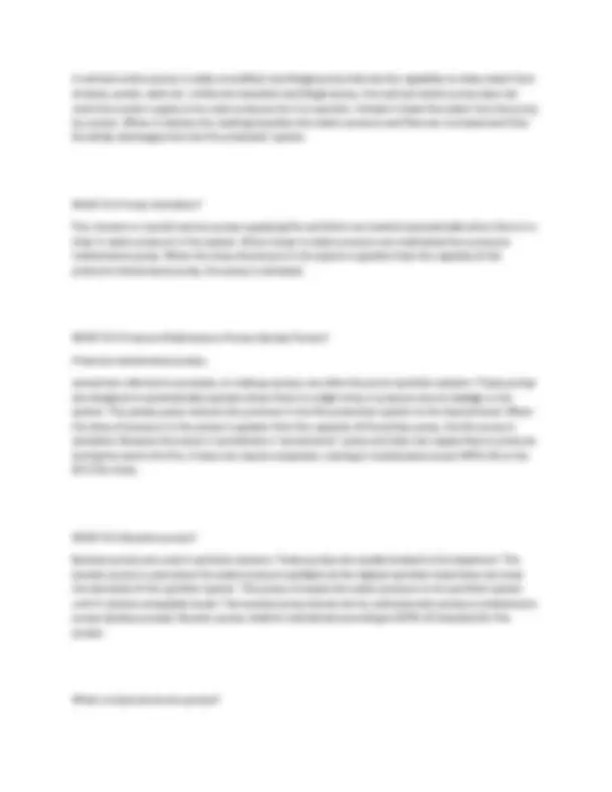
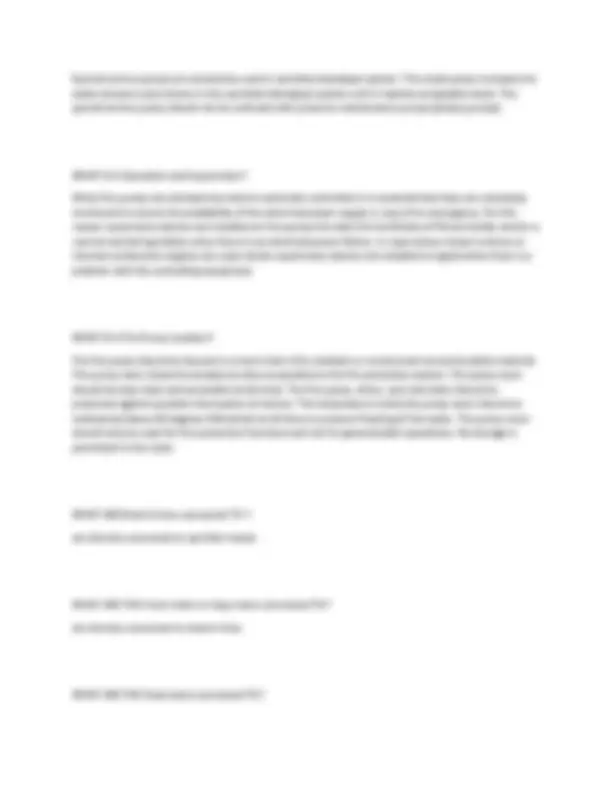
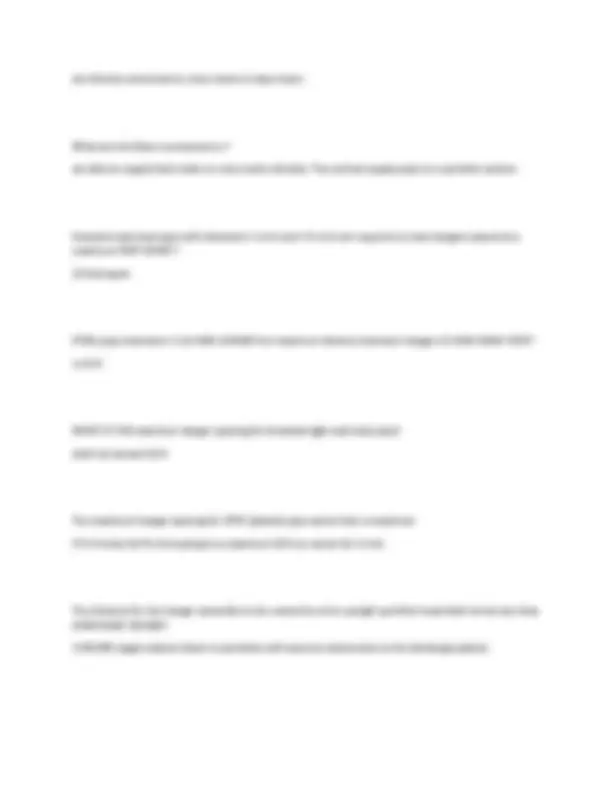
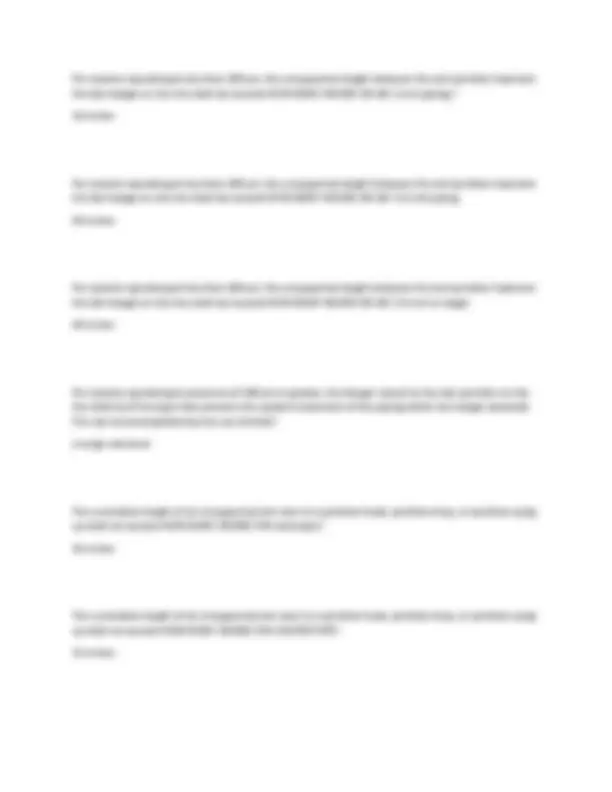
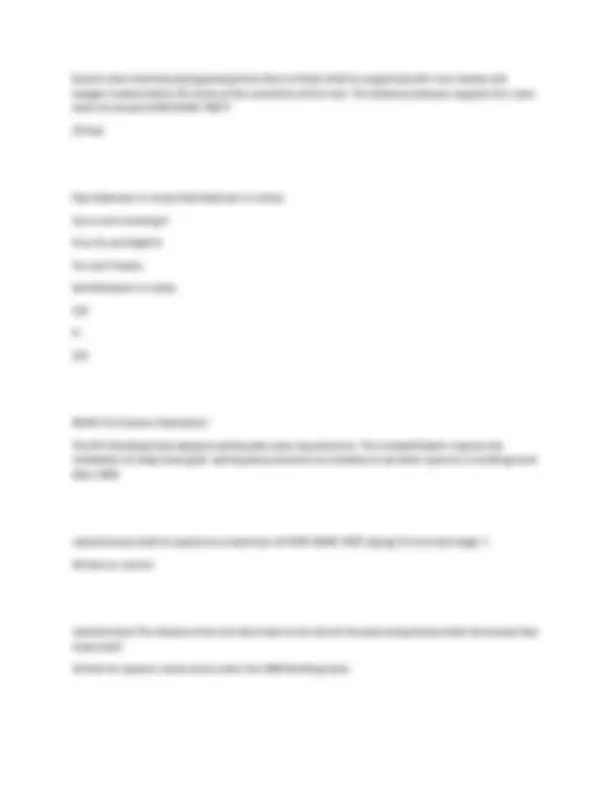
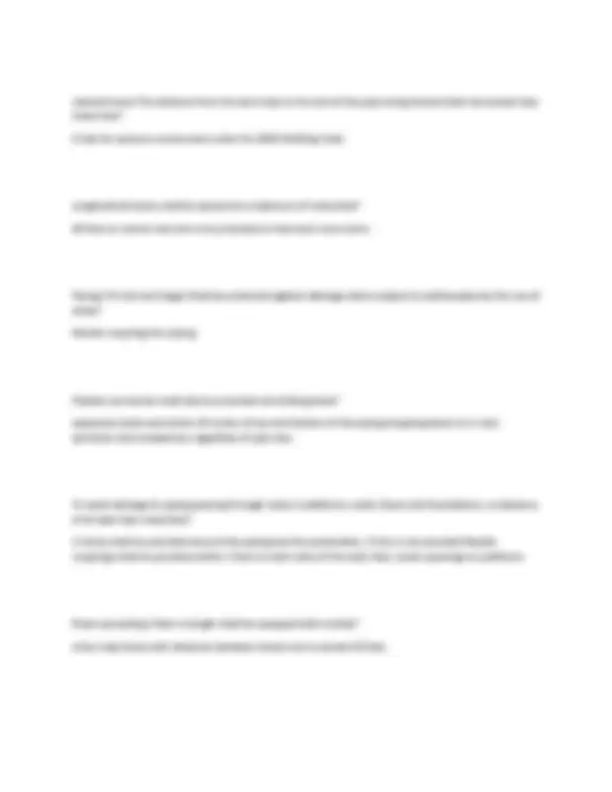
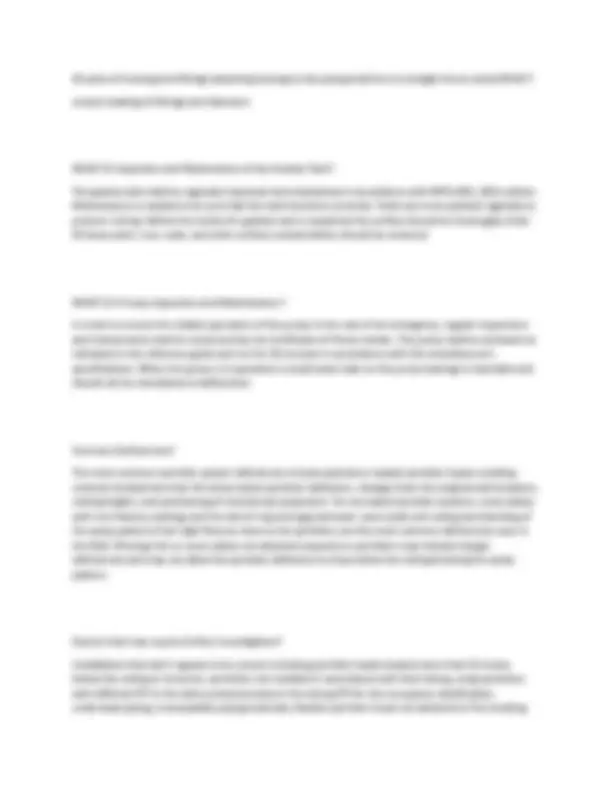
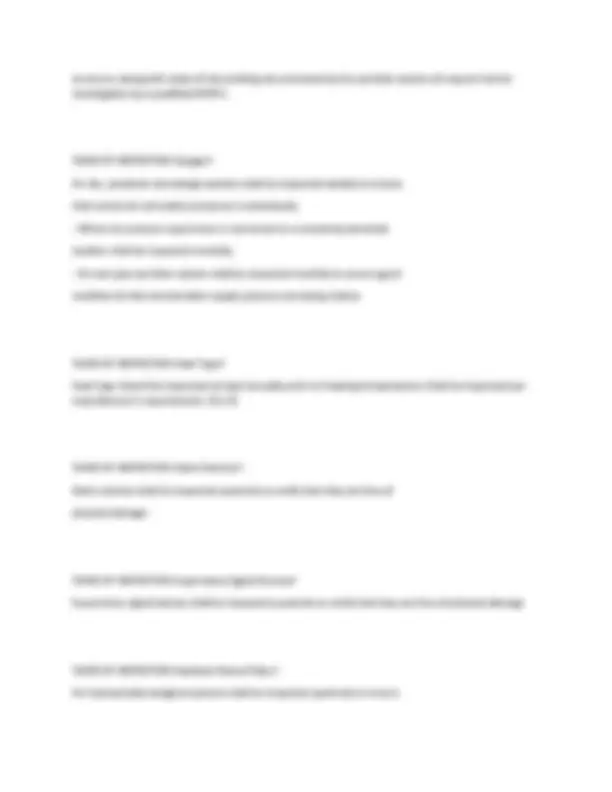
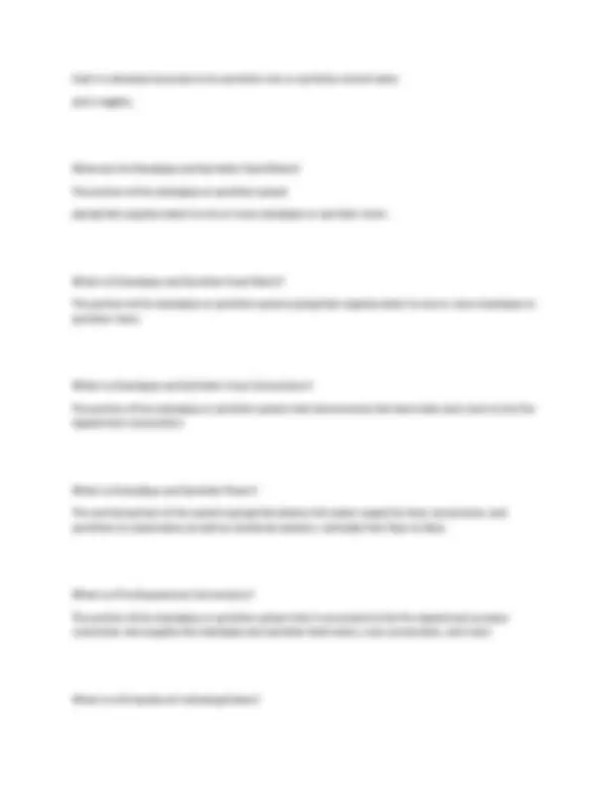
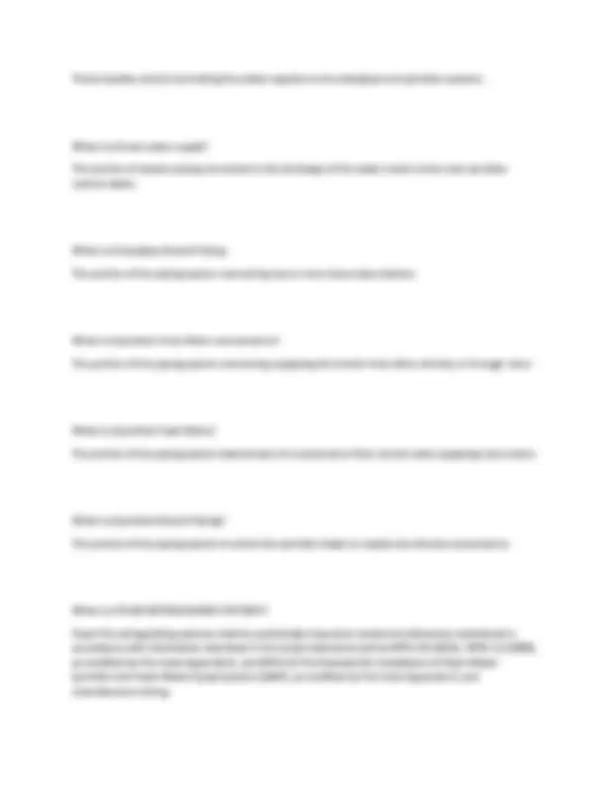
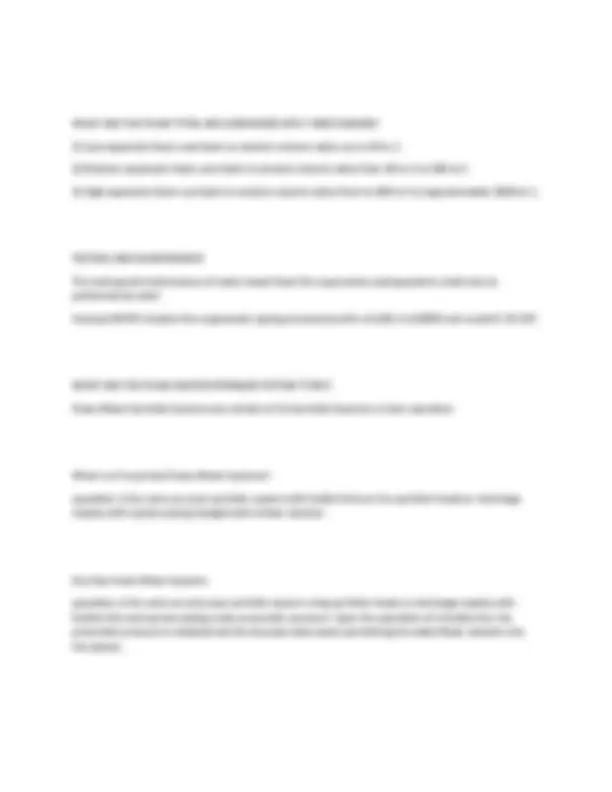
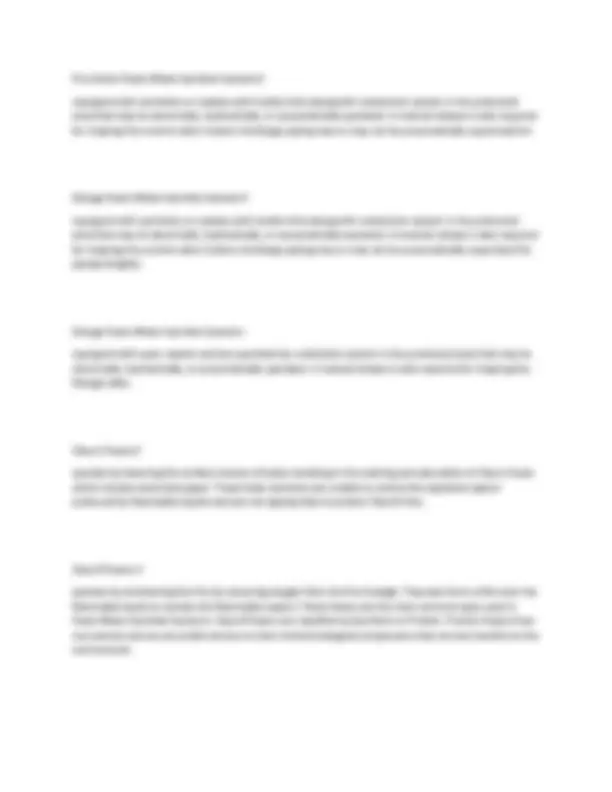
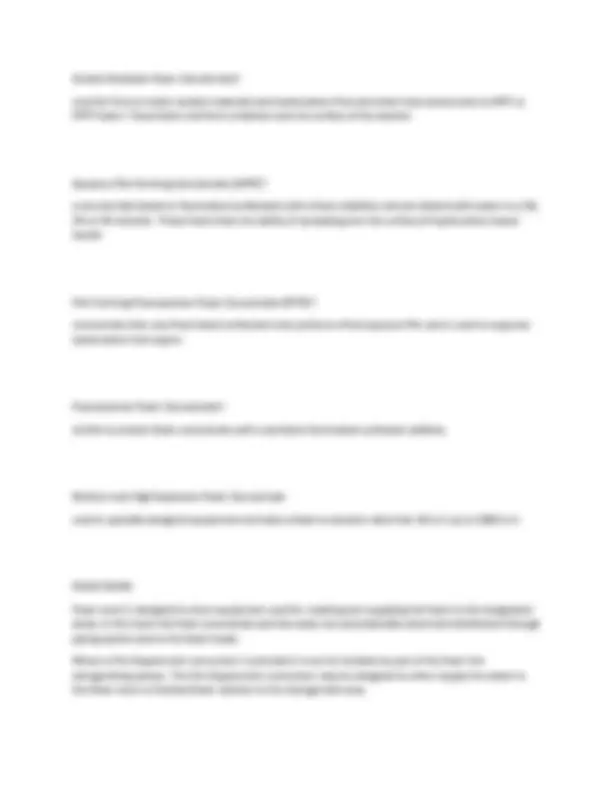
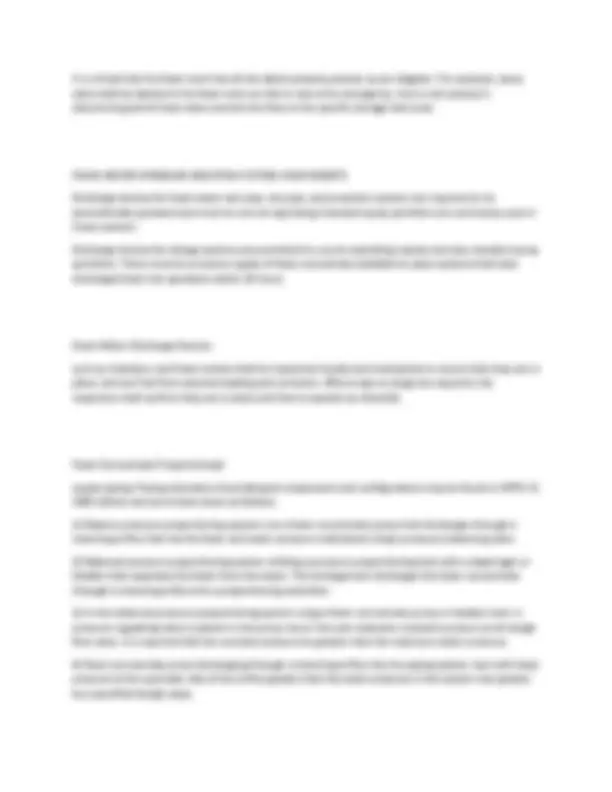
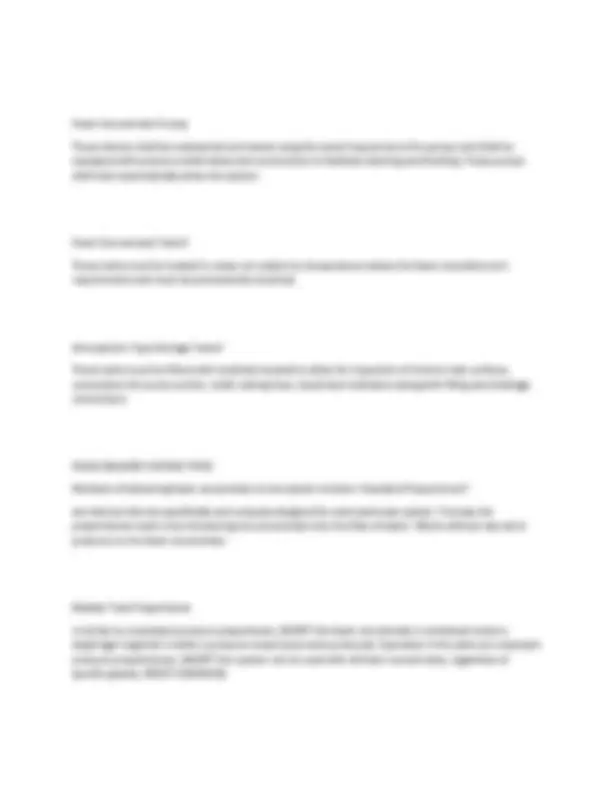
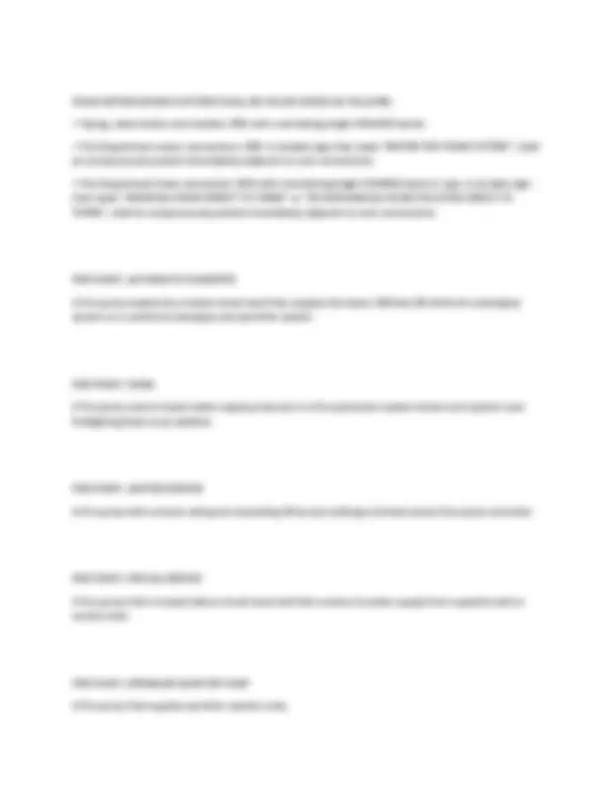
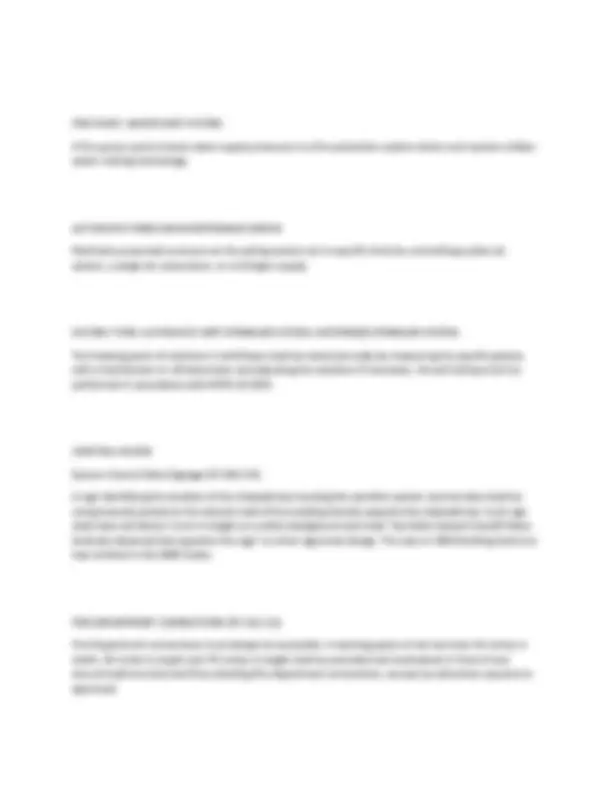
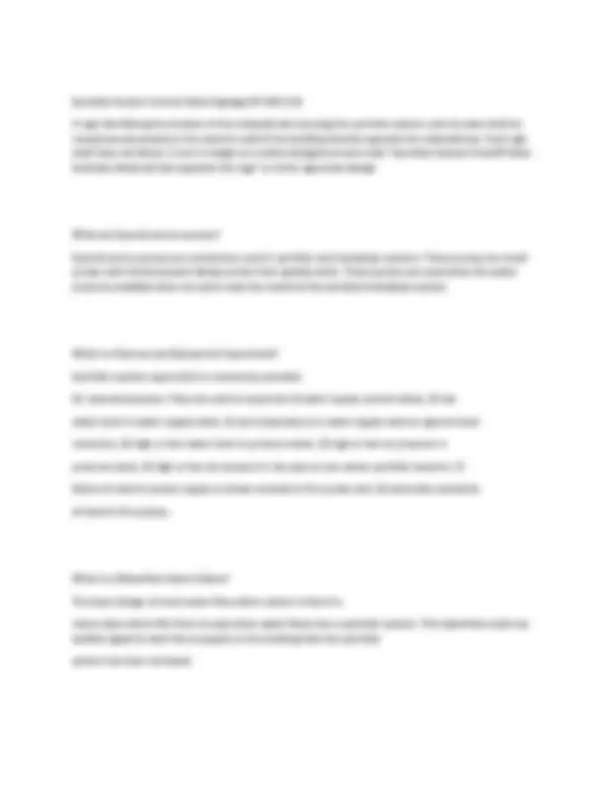
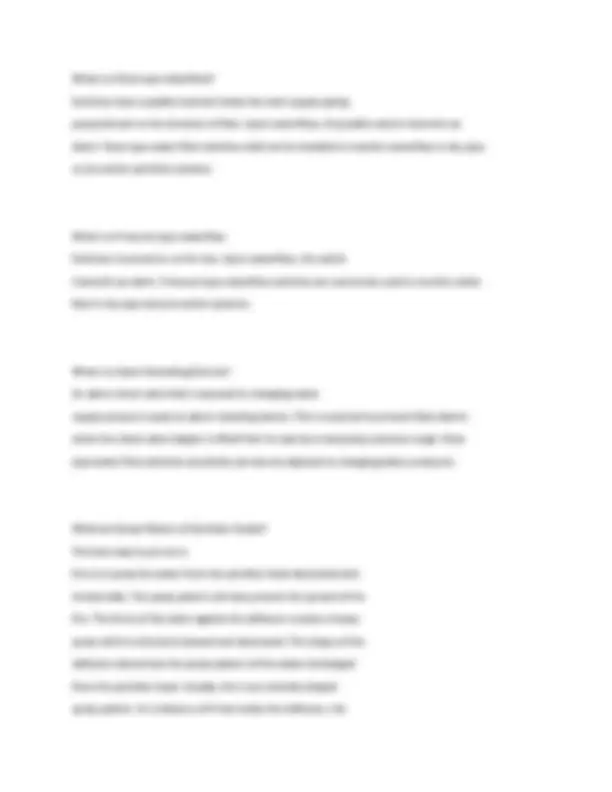
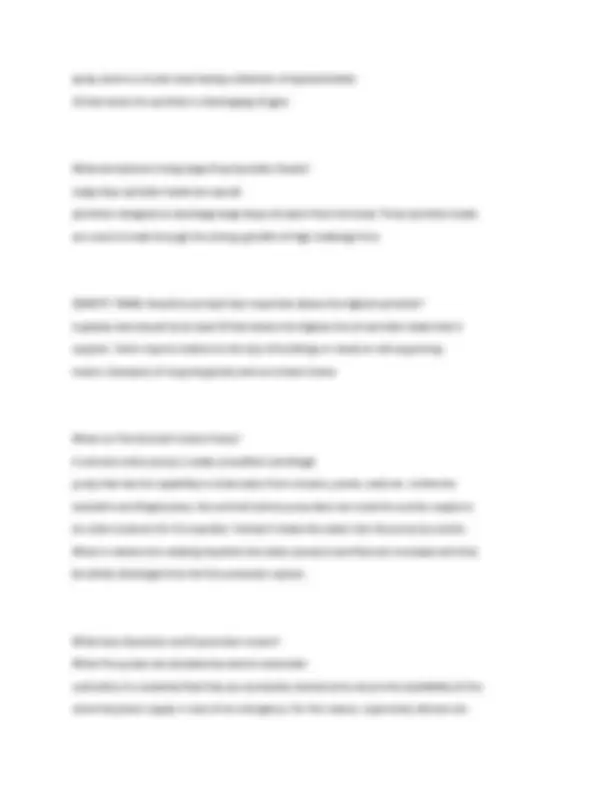
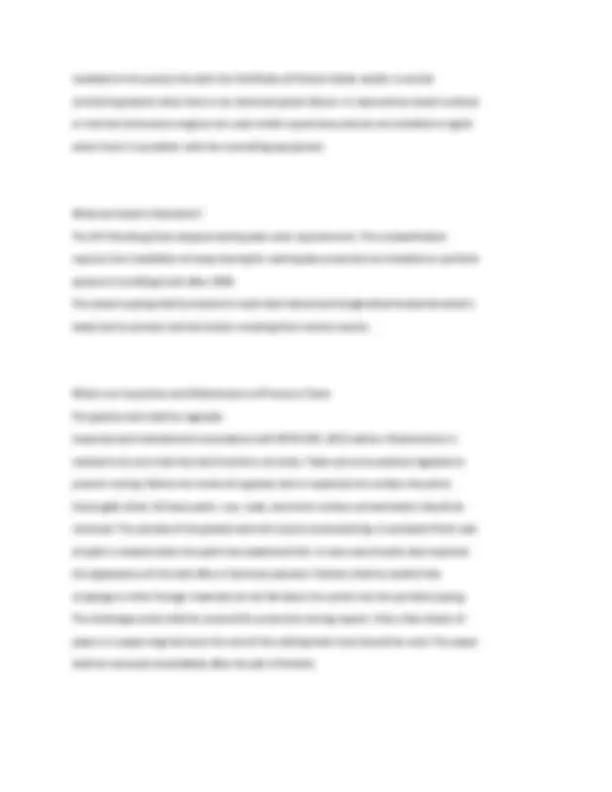
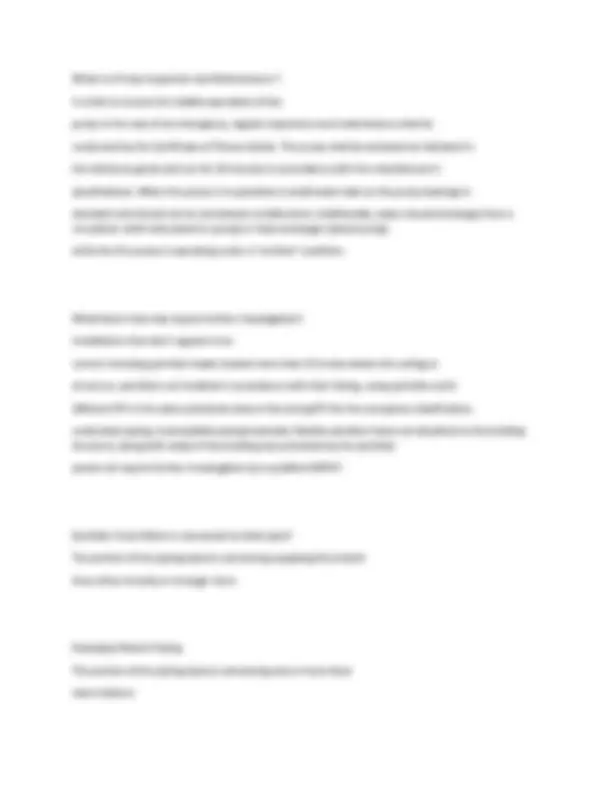
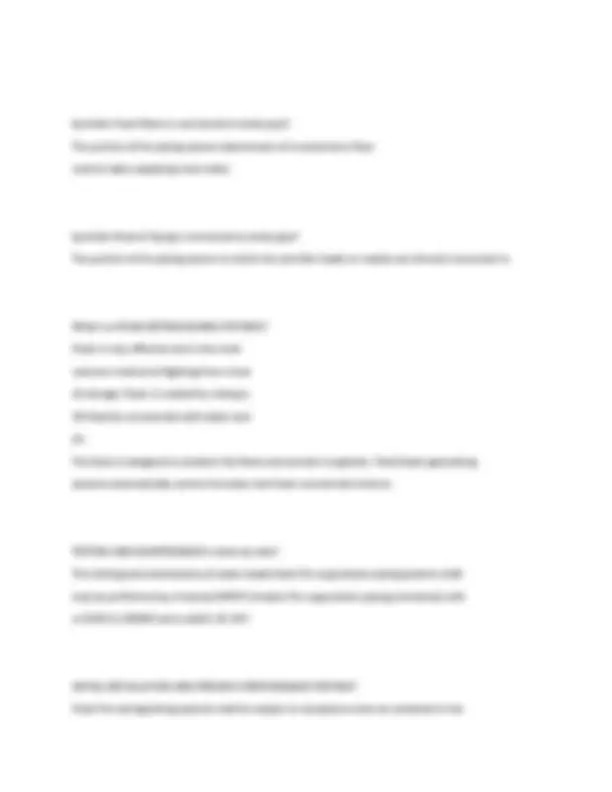
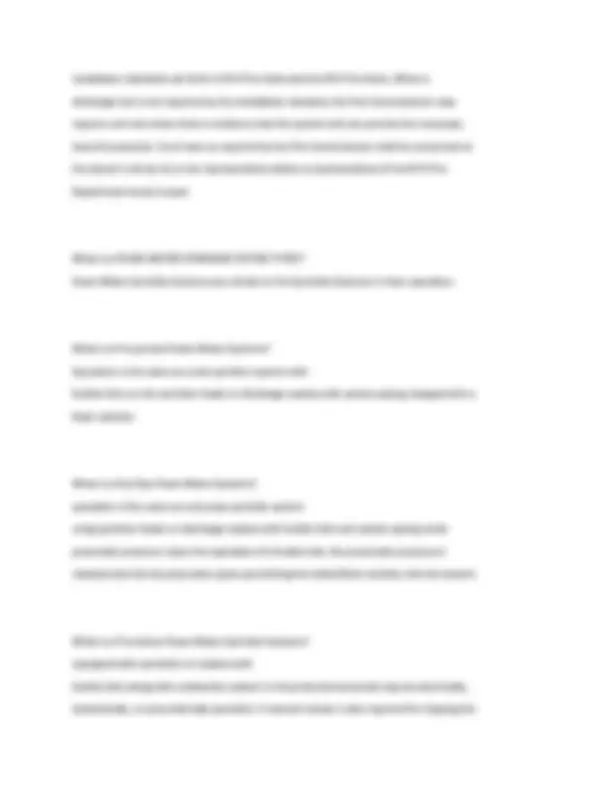
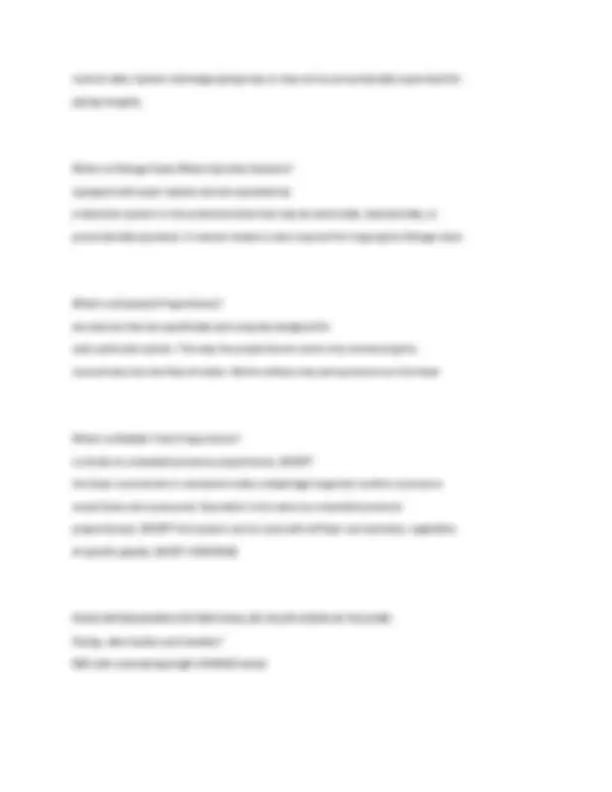
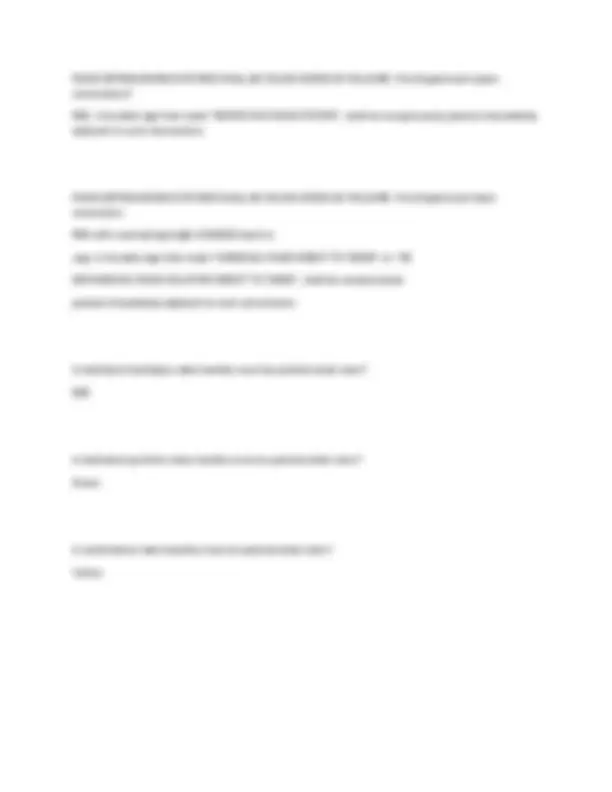


Study with the several resources on Docsity

Earn points by helping other students or get them with a premium plan


Prepare for your exams
Study with the several resources on Docsity

Earn points to download
Earn points by helping other students or get them with a premium plan
Community
Ask the community for help and clear up your study doubts
Discover the best universities in your country according to Docsity users
Free resources
Download our free guides on studying techniques, anxiety management strategies, and thesis advice from Docsity tutors
A comprehensive set of questions and answers related to the s12 fdnyc exam, covering essential fire safety concepts and terminology. It includes definitions of key fire protection system components, such as alarm notification appliances, automatic ball drips, central stations, and sprinkler systems. Valuable for individuals preparing for the s12 fdnyc exam, offering insights into the exam's scope and content.
Typology: Exams
1 / 45

This page cannot be seen from the preview
Don't miss anything!






































What is a ALARM NOTIFICATION APPLIANCE A fire alarm system component, such as a bell, horn, speaker, light, text display or vibration device that issues an audible, tactile, and/or visual alert. What is a AUTOMATIC BALL DRIP - An automatic drain valve horizontally installed at the low point in the piping between the lower check valve and the Fire Department connection of automatic sprinkler systems. Water pressure from a Fire Department pumper automatically closes this valve. It automatically re-opens when pressure ceases, permitting this piping to drain and thereby preventing freezing What is a CENTRAL STATION A facility that receives alarm signals from a protected premises and retransmits or otherwise reports such alarm signals to the department. WHAT IS A COMBINATION STANDPIPE AND SPRINKLER SYSTEM A system where the water piping services both 2½ in. (65 mm) outlets for fire department use and outlets for automatic sprinklers. What is a CONTROL MODE SPECIFIC APPLICATION SPRINKLERS (CMSA) - Control mode sprinkler systems are designed to control a fire until its original fuel source is depleted or until fire-fighting activities can commence. A fire is controlled by cooling the ceiling-level air temperatures, reducing the fire's rate of heat release and pre-wetting adjacent combustibles.
A pressure reducing valve installed to regulate pressures in an entire fire protection system and/or standpipe system zone. What is a Fire Guard? The impairment coordinator or other building staff trained and knowledgeable in conducting a fire watch may conduct a fire watch in lieu of a fire guard during the initial 4 hours of a planned removal from service, or after discovery of an unplanned out-of-service condition, provided that the floor or area in which the fire protection system is out of service does not exceed 50,000 square feet. A sufficient number of fire guards shall be provided such that each floor or area in which the fire protection system is out of service is patrolled at least once an hour. What is an Impaired Equipment:? Underground service mains, water storage tanks, Fire Department connections, control valves, fire and or booster pumps, that are out of service and are considered vital to part of the system that are required to be tagged following procedures outlined in Chapter 15 of NFPA #25 2011 Ed. What is Protection of Sprinkler Systems? All parts of an automatic system exposed to freezing temperatures shall be protected from freezing or in lieu thereof, an automatic dry pipe system or a system filled with a nonfreezing, noncombustible solution shall be used. When a system filled with a nonfreezing solution. What is a Riser Card.? In addition to those records required by NFPA 25 as mentioned above, an approved card bearing the dates of each inspection, certificate of fitness number and signature of the certificate of fitness holder shall be posted on the premises near the main water supply control valve. (FC 901.6.2.1) (This approved card shall not replace or supersede the detailed record of inspection).
What is a DELUGE VALVE? A water supply control valve intended to be operated by actuation of an automatic detection system that is installed in the same area as the discharge devices. Each deluge valve is intended to be capable of automatic and manual operation. What is a DRY PIPE SPRINKLER SYSTEM? A sprinkler system employing automatic sprinklers that are attached to a piping system containing air or nitrogen under pressure. The release of the air or nitrogen,(as from the opening of a sprinkler) results in the water pressure opening a valve known as a dry pipe valve, resulting in the flow of water into the piping system and out of the fused sprinklers heads. What is a DRY SPRINKLER? A sprinkler secured in an extension nipple that has a seal at the inlet to prevent water from entering the nipple until the sprinkler operates. May be configured with an upright pendent or sidewall sprinkler. WHAT IS A DISCHARGE DEVICE? A device designed to discharge water or foam-water solution in a predetermined, fixed, or adjustable pattern. Examples include, but are not limited to, sprinklers, spray nozzles, and hose nozzles WHAT IS A EARLY SUPPRESSION FAST RESPONSE SPRINKLER (ESFR)? A type of fast response sprinkler that is listed for its capability to provide fire suppression of specific high challenge fire hazards. WHAT IS A EXTRA LARGE ORIFICE SPRINKLERS (ELO)? A sprinkler head with and orifice size equal to or greater than 1". This sprinkler is used for protection of high piled storage in warehouses and less pressure is required to achieve a given discharge density.
...A type of spray sprinkler with a maximum area coverage of 400 sq ft ( 20 ft by 20 ft spacing between sprinkler ) for light hazard occupancies to a maximum of 144 square feet 12 ft by 12-ft sprinkler spacing between sprinkler) for extra hazard occupancies. WHAT IS A EXTENDED COVERAGE SPRINKLERS? A type of spray sprinkler with a maximum area of coverage of 400 square feet (20 foot by 20 foot spacing between sprinklers) for light hazard occupancies to a maximum of 144 square feet (12 foot by 12 foot spacing between sprinklers) for extra hazard occupancies. WHAT IS A FIRE ALARM SYSTEM? Any system, including any interconnected fire alarm sub-system, of components and circuits arranged to monitor and annunciate the status of fire alarm or supervisory signal-initiating devices WHAT IS A FIRE DEPARTMENT CONNECTION? A connection, normally on the exterior of the building, through which the fire department can pump supplemental water into the sprinkler system, standpipe, or other system furnishing water for fire extinguishment to supplement existing water supplies. (Formerly known as Siamese connection.) WHAT IS A FIRE EXTINGUISHING SYSTEM? An approved system of devices and equipment which detects a fire and discharges an approved fire extinguishing agent onto or in the area of a fire. Such term includes automatic systems and, where such systems are authorized by this code or the Building Code, manually activated systems. WHAT IS A FIRE HYDRANT?
A fire pump that is located above street level and that receives its water supply from a gravity tank or suction tank supplying water to fire sprinkler system and/or Fire Department hose outlets. WHAT IS A FIRE PUMP, SPRINKLER BOOSTER PUMP? A fire pump that supplies sprinkler systems only. WHAT IS A FIRE PUMP, WATER MIST SYSTEM? A fire pump used to boost water supply pressures in a fire protection system where such system utilizes water misting technology. WHAT IS A GLASS BULB SPRINKLER? A sprinkler operated by heat breaking a glass bulb filled with a non freezing liquid with diameters that vary from 3mm for quick response sprinklers to 5mm for standard response sprinklers. WHAT IS A HOSE VALVE? The valve to an individual hose connection. WHAT IS A HYDRAULIC PLACARD? A sign attached to a hydraulically calculated sprinkler system indicating the design density, required gallons per minute and pressure for the system to operate properly. WHAT IS A HYDRAULICALLY CALCULATED SYSTEMS?
A method of sizing automatic sprinkler piping using a prescribed amount of water to be distributed over a specific area. WHAT IS A IMPAIRMENT? A condition where a fire protection system or unit or portion thereof is out of order, and the condition can result in the fire protection system or unit not functioning in a fire event. WHAT IS A IMPAIRMENT COORDINATOR? The person responsible for ensuring that proper safety precautions are taken when a fire protection system is placed out of service. WHAT IS A INTERMEDIATE LEVEL SPRINKLER/RACK STORAGE SPRINKLER? A sprinkler equipped with integral shields to protect the operating element from discharge from sprinklers installed at higher elevations. WHAT IS A LARGE ORIFICE SPRINKLER? A sprinkler head with and orifice size equal to or greater than ¾" and less than 1". WHAT IS A LISTED DEVICE? A fire protection component that has been tested to perform under parameters specified for its use by a nationally recognized testing agency. Underwriter's Laboratory (UL) and Factory Mutual (FM) are the two most common. WHAT IS A MASTER PRESSURE REDUCING VALVE?
The primary drain connection located on the system riser and also utilized as a flow test connection. These valves are typically globe pattern valves. WHAT IS A OUT OF SERVICE SYSTEM? A fire protection system that is not fully functional; or whose operation is impaired or is otherwise not in good working order. WHAT IS A OLD-STYLE/CONVENTIONAL SPRINKLER? A sprinkler that directs 40% to 60% of the water initially in a downward direction and is designed to be installed with the deflector in either the upright or pendent position. WHAT IS A PENDENT SPRINKLER? A sprinkler designed to be installed in such a way that the water stream is directed downward against the deflector. WHAT IS A PINTLE SCREWS? A visual indicating device required for sprinklers manufactured prior to 1999 identifying small orifice sprinklers and large orifice sprinklers where orifice size is different than the nominal thread size of the sprinkler head. WHAT IS A PIPE SCHEDULE SYSTEMS? A method of sizing piping based upon the number of sprinkler heads and the occupancy of the protected area. WHAT IS A PREACTION SPRINKLER SYSTEM?
A sprinkler system employing automatic sprinklers that are attached to a piping system that contains air that may or may not be under pressure, with a supplemental detection system installed in the same areas as the sprinklers. WHAT IS A PERSONAL SUPERVISION? Supervision by the holder of a FDNY Certificate of Fitness who is required to personally present on the premises, or other proximate location acceptable to the department, while performing the duties for which the certificate is required. WHAT IS A PRESSURE CONTROL VALVE? A pilot operated pressure reducing valve that may be used with a fire or booster pump designed for the purpose of preventing the incoming water supply pressure from dropping below a set pressure. WHAT IS A PRESSURE-REDUCING VALVE? A valve designed for the purpose of reducing the downstream water pressure under both flowing (residual) and non-flowing (static) conditions. WHAT IS A PRESSURE RELIEF VALVE? A valve designed for the purpose of releasing excess air or water pressure from the Fire Protection Piping System. WHAT IS A PRESSURE TANK? A tank using air pressure to supplying water for water-based fire protection systems. Tank contents to be maintained at one third air to two thirds water WHAT IS A QUICK RESPONSE SPRINKLER HEAD?
A sprinkler head with and orifice size smaller than ½". WHAT IS A SOLDER LINK SPRINKLER? A sprinkler operated by the melting of a metal link, they vary in size and configuration for quick response and standard response sprinklers. The smaller the size of the link, the faster the sprinkler operates. WHAT IS A SPRAY SPRINKLER? A type of sprinkler listed for its capability to provide fire control for a wide range of fire hazards. The most commonly used sprinkler since 1953. WHAT IS A SPRINKLER SYSTEM? A fire extinguishing system, other than a mist fire extinguishing system that utilizes water as the extinguishing agent. WHAT IS A STANDARD RESPONSE SPRINKLER HEAD? A sprinkler having a fusible link with a response time index (RTI) of 80 or more. WHAT IS A SUPERVISORY SIGNAL-INITIATING DEVICE? An initiating device, such as a valve supervisory switch, water level indicator, or low-air pressure switch on a dry-pipe or pre-action sprinkler system, that triggers a supervisory signal. WHAT IS A AUTOMATIC PRESSURE MAINTENANCE DEVICE?
Maintains pneumatic pressure on the piping system set to specific limits by controlling a plant air system, a single air compressor, or a nitrogen supply. WHAT IS A TESTING? A procedure used to determine the status of a system as intended by conducting periodic physical checks on water based fire protection systems such as waterflow tests, fire pump tests, alarm tests, and trip tests of dry pipe, deluge, or preaction valves. These tests follow up on the original acceptance test at intervals specified in the appropriate chapter of NFPA #25, 2011 edition WHAT IS A UPRIGHT SPRINKLER? A sprinkler designed to be installed in such a way that the water spray is directed upwards against the deflector. WHAT IS A WATER SPRAY? Water in a form having a predetermined pattern, particle size, velocity, and density discharge from specially designed nozzles or devices. WHAT IS A WATER SUPPLY? A source of water that provides the flows [gal/min (L/min)] and pressures [psi (bar)] required by the water-based fire protection system. WHAT IS A WET PIPE SPRINKLER SYSTEM? A sprinkler system employing automatic sprinklers attached to a piping system containing water and connected to a water supply so that water discharges immediately from sprinklers opened by heat from a fire.
A sprinkler system employing automatic sprinklers that are attached to a piping system containing air or nitrogen under pressure, the release of which (as from the opening of a sprinkler) permits the water pressure to open a valve known as a dry pipe valve, and the water then flows into the piping system and out the opened sprinklers. What is water hammer in the system? Higher than normal water pressure and/or water hammer, may cause the dry valve to trip accidentally. Water hammer is a condition where a sudden increase in pressure may cause the valve to trip. To reduce this danger air pressure is usually kept well above the normal trip point. The air pressure is usually set at 15 to 20 psi (pounds per square inch) above the normal trip level. Some valves are specially designed for low pressures. WHAT IS A Quick Opening Devices? In a dry pipe system, there is a delay between the opening of a sprinkler and the discharge of water. This delay may allow the fire to spread and more sprinkler heads to open. The delay is due to the time required for the air leave the sprinkler piping. This difficulty may be partly overcome by the installation of quick opening devices. Quick opening devices when employed must be in operation at all times.Two devices are used to reduce the time needed to open the clapper and allow water into the system. These devices are an accelerator and an exhauster. They are both automatically activated when a drop of 2 psi in air pressure is detected in the system. They quickly change the water and air pressure balance in the system. This change trips WHAT IS A PREACTION SPRINKLER SYSTEMS? A preaction valve prevents the water from entering the system. The valve is automatically opened when a fire detection system discovers that there is a fire or smoke condition. The preaction valve is tripped by the fire detection system before any of the sprinkler heads open. A supervisory device signals when the valve is opened. The pre-action valve can also be operated manually.
WHAT IS A Preaction System with a Recycling Feature? A special kind of preaction system is a recycling system for controlling sprinklers. This system shuts off the water when the fire has been put out or the heat drops. If the fire rekindles or the heat rises sharply, water is discharged again. The system continues cycling on and off as long as the fire persists. WHAT IS A Combined Dry Pipe and Preaction Systems? These systems have the basic features of both types of systems. The piping system contains air under pressure. A heat detecting device opens the water control valve and a quick opening device. The system then fills with water and operates as a wet pipe system. If the heat detecting system fails, the system will operate as a standard dry pipe system. WHAT IS A DELUGE SPRINKLER SYSTEMS? The sprinkler heads in the deluge system are open at all times. Under normal conditions, there is no water in the piping. The air in the piping is not under pressure. A closed control valve prevents water from flowing into the system. A fire detection device automatically opens the control valve when a fire is identified. A supervisory device signals when the valve is opened. When the valve is opened water flows into the system. WHAT IS A NON-AUTOMATIC DRY SPRINKLER SYSTEMS? There are several non-automatic systems: 1) Perforated pipe systems - a single line of piping drilled at intervals for water discharge. These systems are usually found in basements or other areas difficult to reach in fire fighting operations. 2) Open fixed spray nozzles for transformer vaults or other hazardous areas; 3) exterior exposure sprinklers (or window sprinklers) use open sprinkler heads to form an external water curtain on the walls of a building, and 4) Foam supply systems are used for the protection of special hazardous occupancies. WHAT IS A GARBAGE COMPACTOR SPRINKLER SYSTEMS? Waste compactors are usually found in tall multiple dwelling complexes such as apartment buildings. They are used to reduce the trash buildup in a building. They consist of a tall chute with an opening at each floor. These opening are used for trash disposal.
Under 300= sprinklers six. 301 - 1000= sprinklers twelve. Over 1000= sprinklers twenty-four. WHAT IS A PRESSURE TANKS? Pressure tanks are to be maintained at approximately two-thirds full of water and one-third full of pressurized air. The minimum acceptable air pressure inside the tank is 75 psi (pounds per square inch). The air pressure in the tank may be automatically maintained by an air compressor. The maximum gross capacity of pressure tanks is 9,000 gallons. WHAT IS A GRAVITY TANKS? A gravity tank should be at least 25 feet above the highest line of sprinkler heads that it supplies. Tanks may be located on the tops of buildings or raised on tall supporting towers. Examples of a typical gravity tank are shown below. WHAT IS A FIRE PUMPS The Centrifugal Pump? The centrifugal fire pump is the standard pump currently used in fire protection systems. This is the preferred pump because it is reliable, compact, requires low maintenance, and it can be powered by a variety of drivers including: electric motors, diesel engines, and steam turbines. WHAT IS A Principle of Operation? The water available to the centrifugal pump must always be under pressure because the pump is not designed to lift water for the supply source. A water tank can be used if the tank supplies the pump due to gravity. WHAT IS A The Vertical Turbine Pump?
A vertical turbine pump is really a modified centrifugal pump that has the capability to draw water from streams, ponds, wells etc. Unlike the standard centrifugal pump, the vertical turbine pump does not need the suction supply to be under pressure for it to operate. Instead it draws the water into the pump by suction. When it reaches the rotating impellers the water pressure and flow are increased and then forcefully discharged into the fire protection system. WHAT IS A Pump Activation? Fire, booster or special service pumps supplying fire sprinklers are started automatically when there is a drop in water pressure in the system. Minor drops in water pressure are maintained by a pressure maintenance pump. When the drop of pressure in the system is greater than the capacity of the pressure maintenance pump, the pump is activated. WHAT IS A Pressure Maintenance Pumps (Jockey Pumps? Pressure maintenance pumps, sometimes referred to as jockey, or makeup pumps, are often found on sprinkler systems. These pumps are designed to automatically operate when there is a slight drop in pressure due to leakage in the system. The jockey pump restores the pressure in the fire protection system to the desired level. When the drop of pressure in the system is greater than the capacity of the jockey pump, the fire pump is activated. Because this pump is considered a "convenience" pump and does not supply flow or pressure during the event of a fire, it does not require inspection, testing or maintenance as per NFPA 25 or the NYC Fire Code. WHAT IS A Booster pumps? Booster pumps are used in sprinkler systems. These pumps are usually located in the basement. The booster pump is used when the water pressure available at the highest sprinkler head does not meet the demands of the sprinkler system. This pump increases the water pressure in the sprinkler system until it reaches acceptable levels. The booster pump should not be confused with pressure maintenance pumps (jockey pumps). Booster pumps shall be maintained according to NFPA 25 standard for fire pumps. What is a Special service pumps?